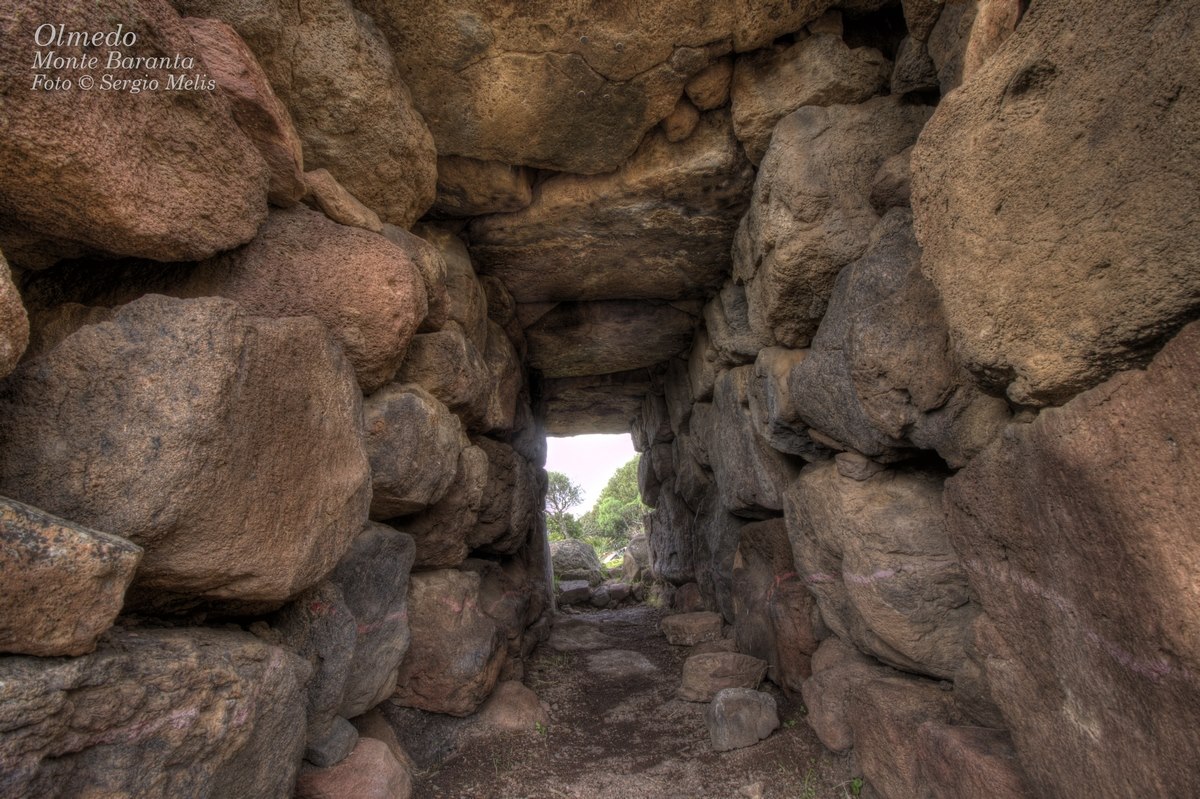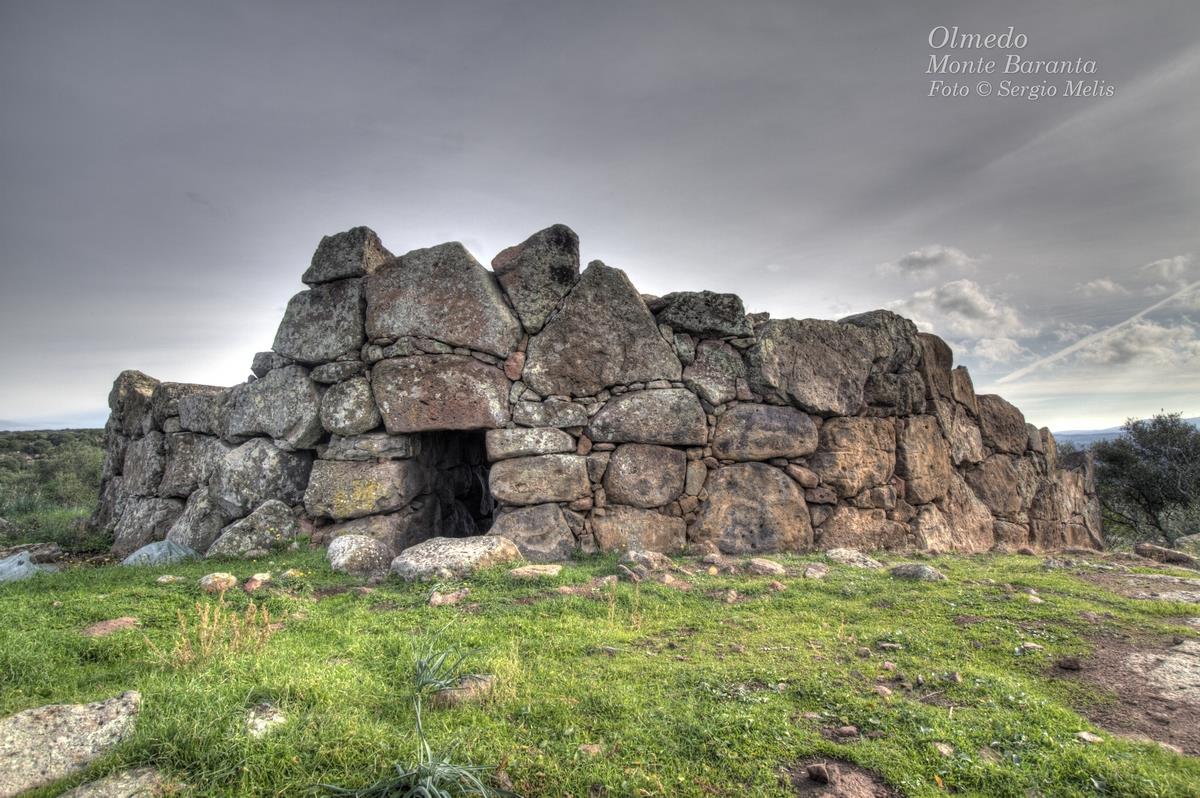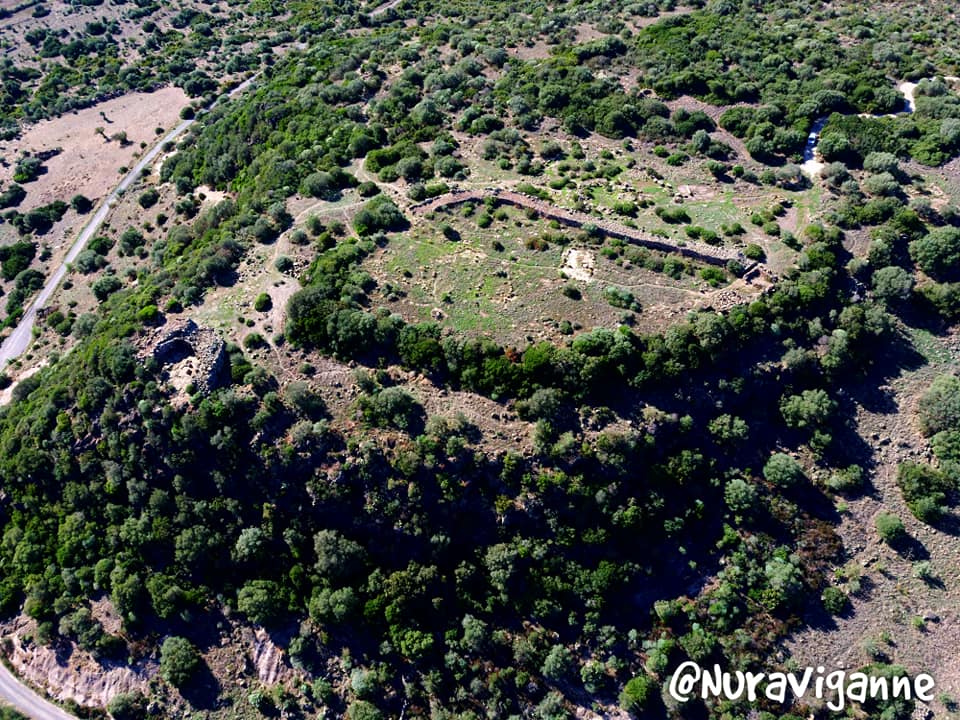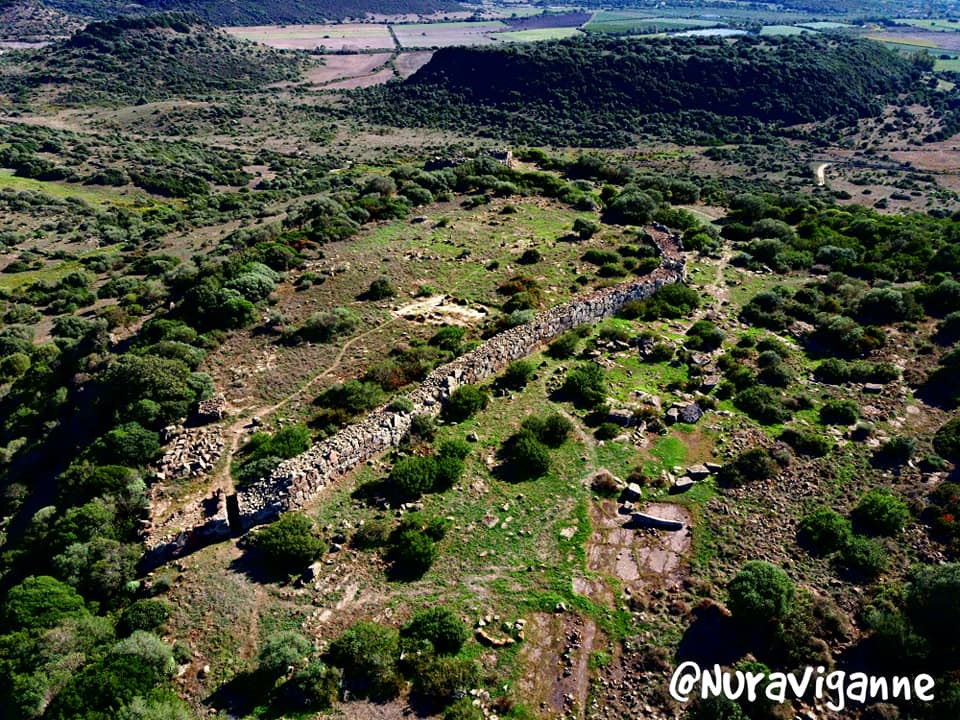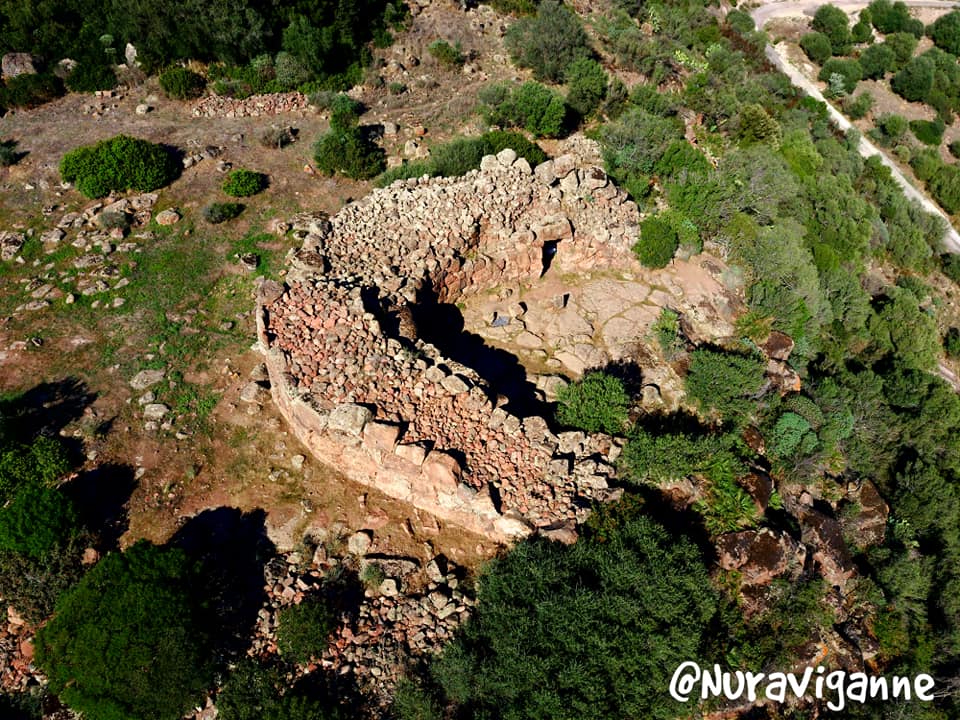7a.2 and 7.2: The archaeological complex of Monte Baranta, in Olmedo, is part of a settlement located on the eastern edge of the homonymous plateau. The complex includes a tower enclosure, a wall that surrounds a settlement, and a megalithic circle with menhirs. The tower enclosure, shaped like a horseshoe, is built on the edge of the escarpment. Its masonry consists of two facings: the outer one made of large trachyte slabs, stacked with the help of large wedges, and the inner one built with smaller, roughly shaped stones arranged in regular rows. The two walls are joined by a filling of stones without any connecting elements. The enclosure defines a large open courtyard whose floor, mostly consisting of natural rock, features areas regularized by stones. About 100 meters northwest of the tower enclosure, in a higher position, there is a short rocky terrace defended by a powerful wall in the only unguarded section. Outside, a few meters west of the wall, there is a megalithic circle delimited by about eighty slabs of various sizes, among which are some menhirs, now broken or lying on the ground. About ten meters northwest, isolated and flattened, there is a menhir almost 4 meters long.
The nuraghe Nieddu, in Porto Torres, appears to be a single-tower structure, featuring a tholos design, and is made of basalt blocks. The floor plan of the chamber is circular, with three lateral niches arranged in a cross and a chamber with a corridor niche. The monument has an architectural peculiarity: the corridor staircase does not pass through the thickness of the tower walls following a spiral path, as is the case in most instances, but at about 4.5 meters from the start, it turns to the right and then bends to the left, thereby cutting transversely across the axis of the corridor. The presence of blocks around the nuraghe and the discovery of ceramic fragments suggest the existence of residential structures (presumably forming a village).
The photos of the archaeological complex of Monte Baranta, in Olmedo, are by Sergio Melis and Nuraviganne. Those of the nuraghe Nieddu, in Porto Torres, are by Marco Piras.


